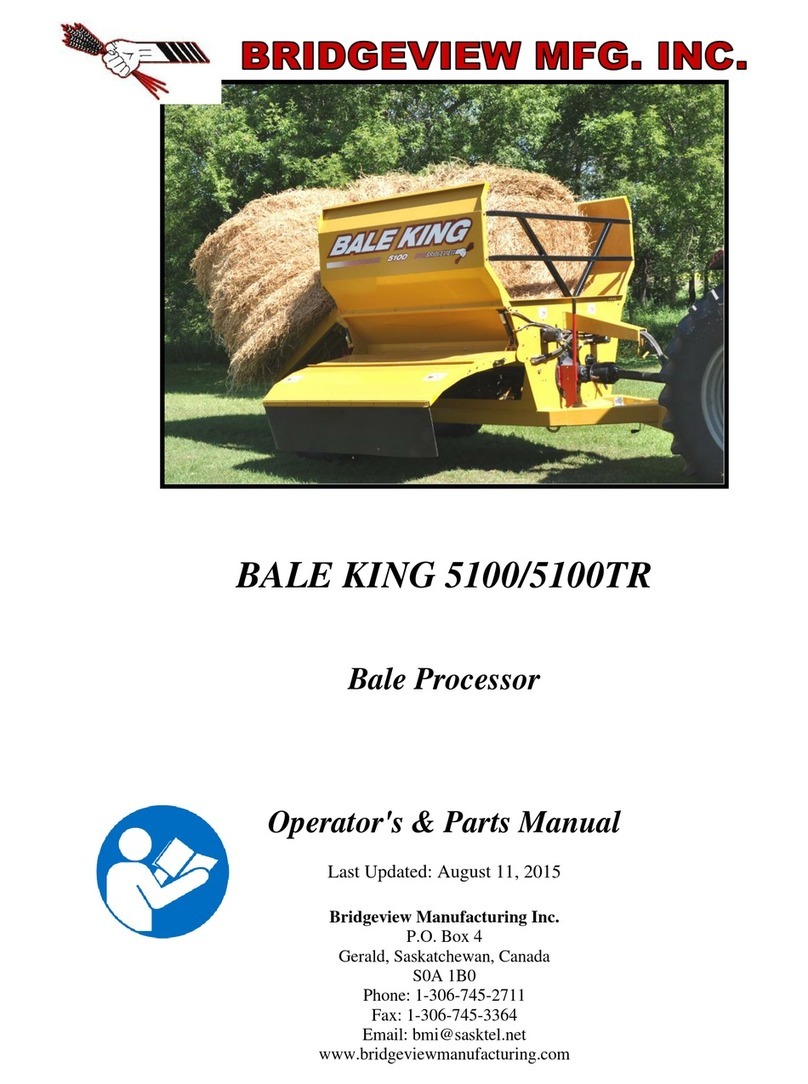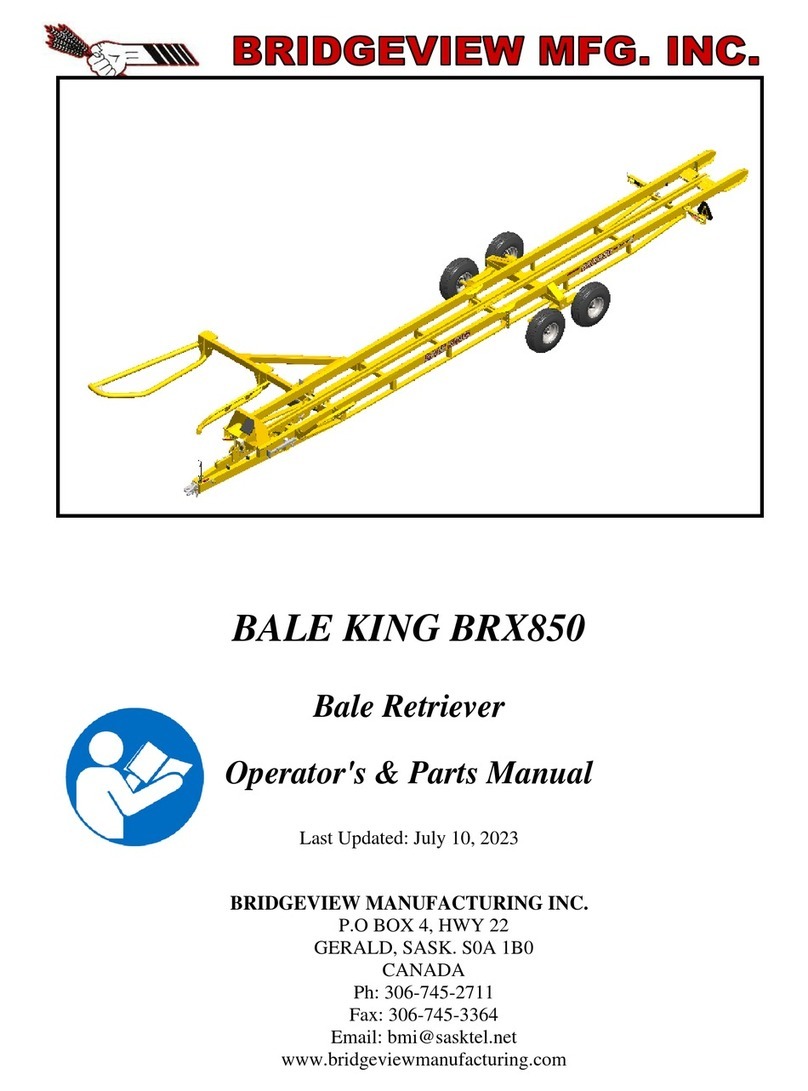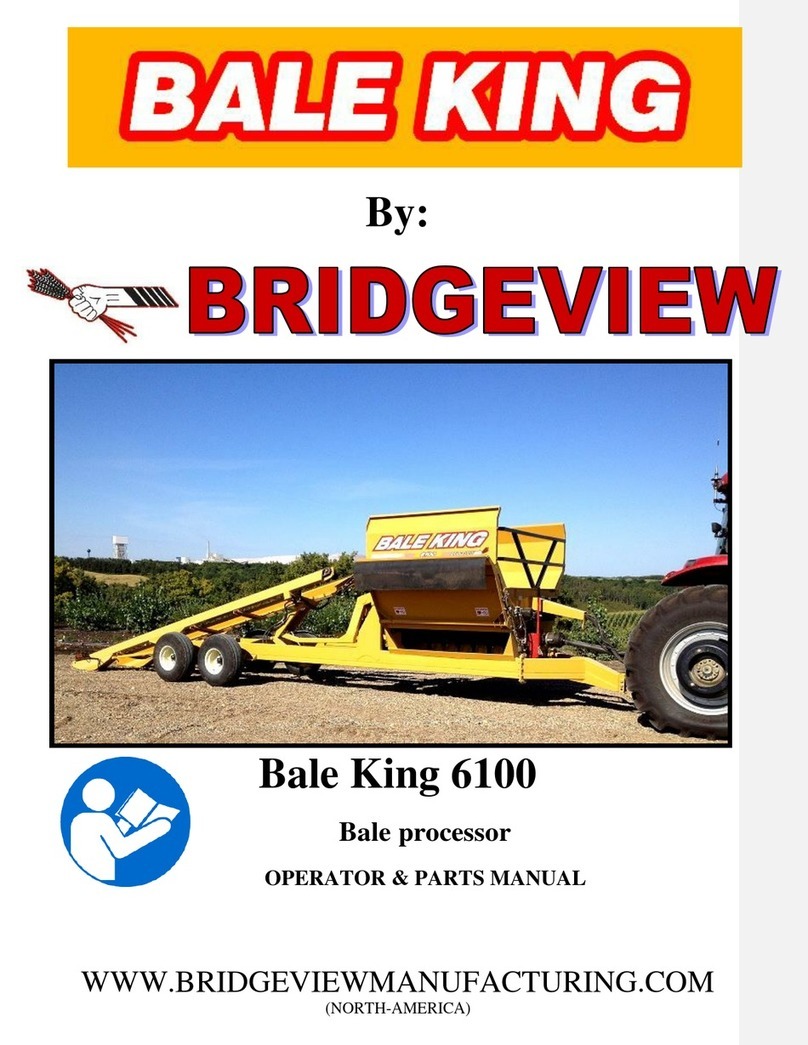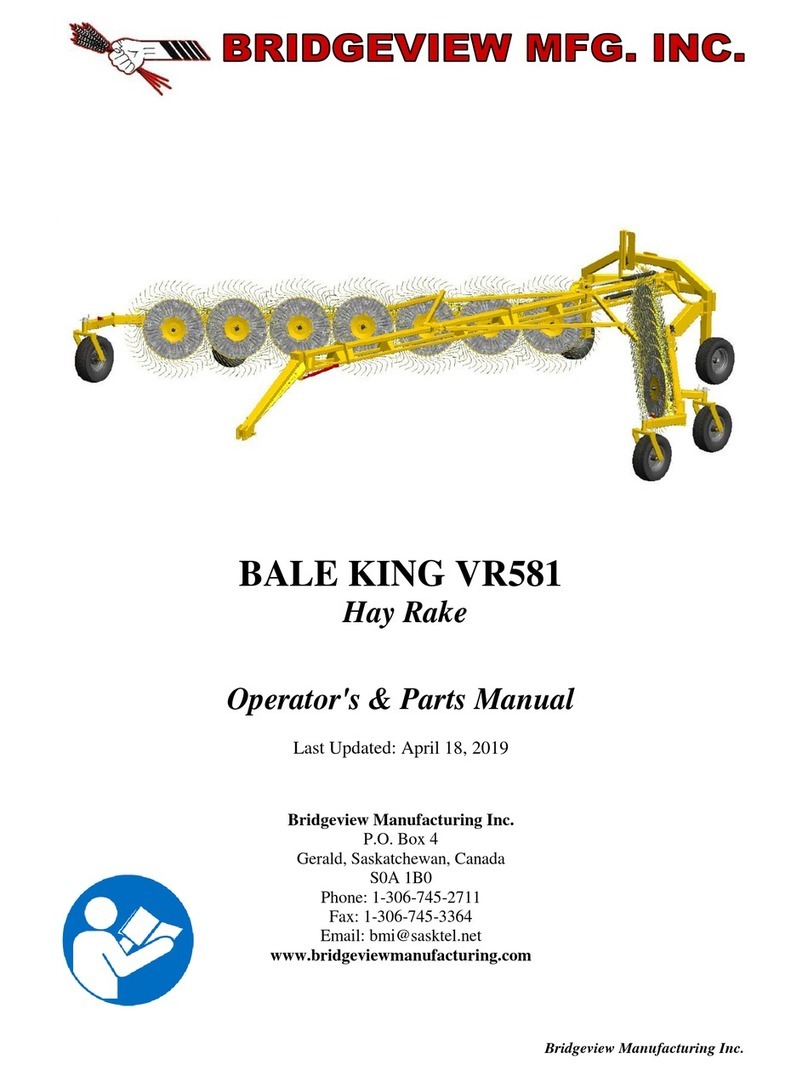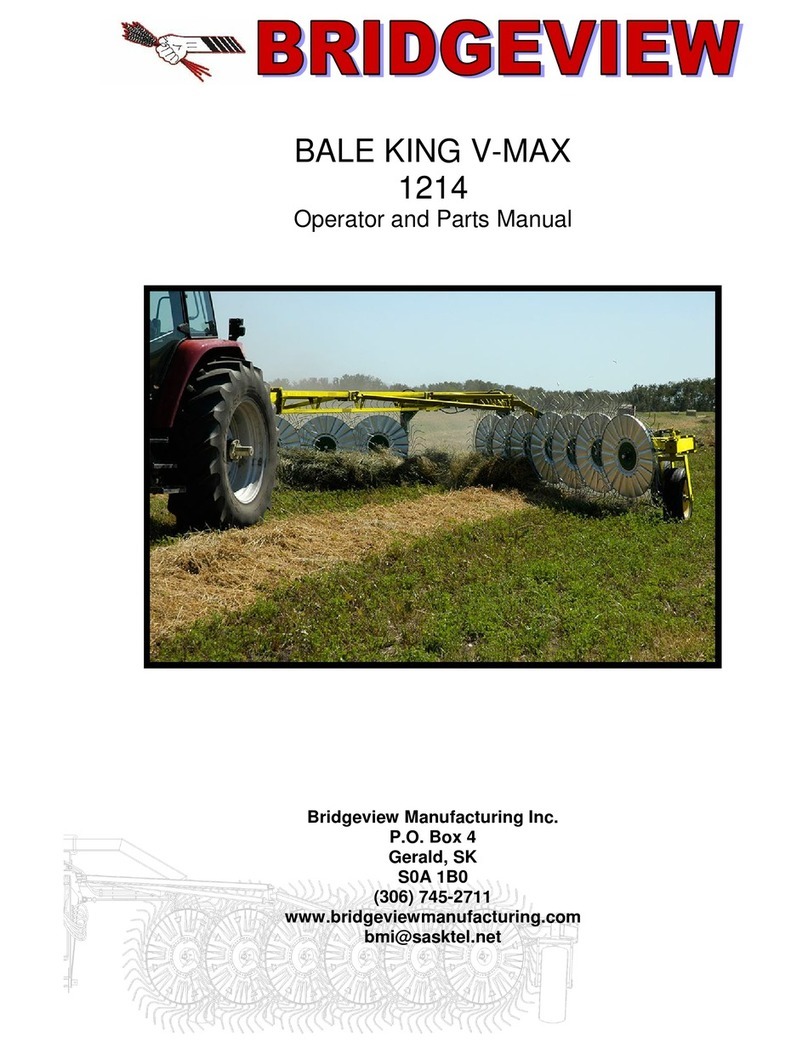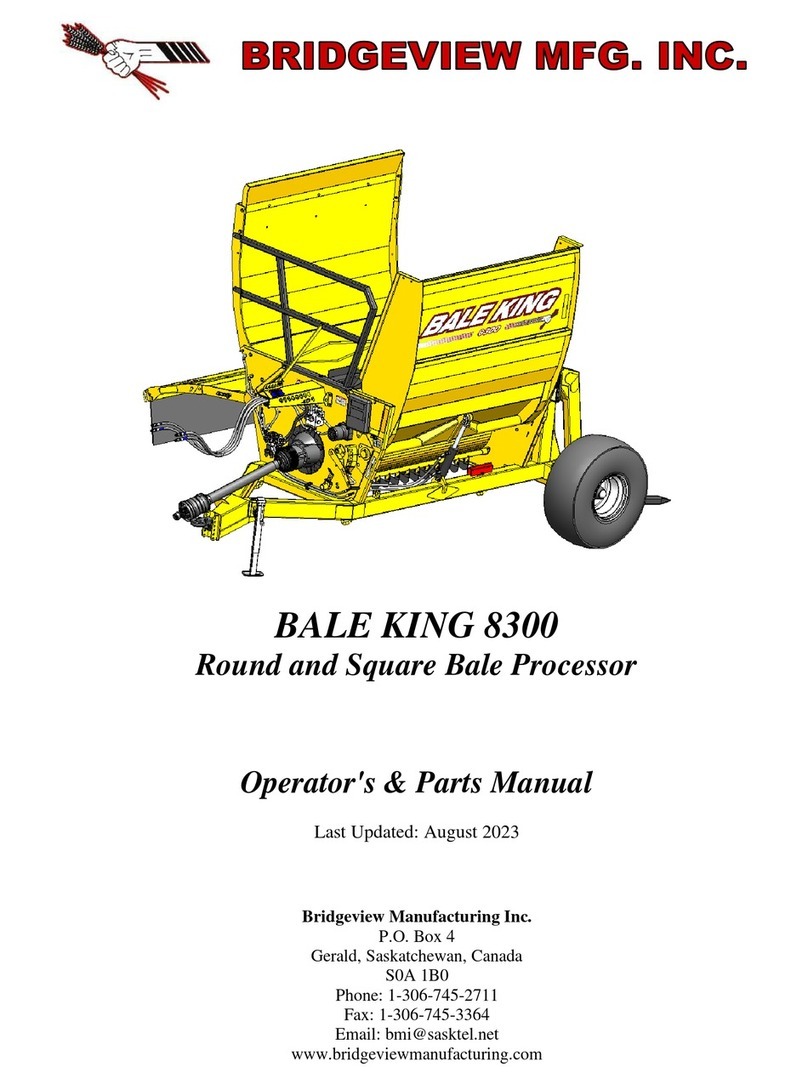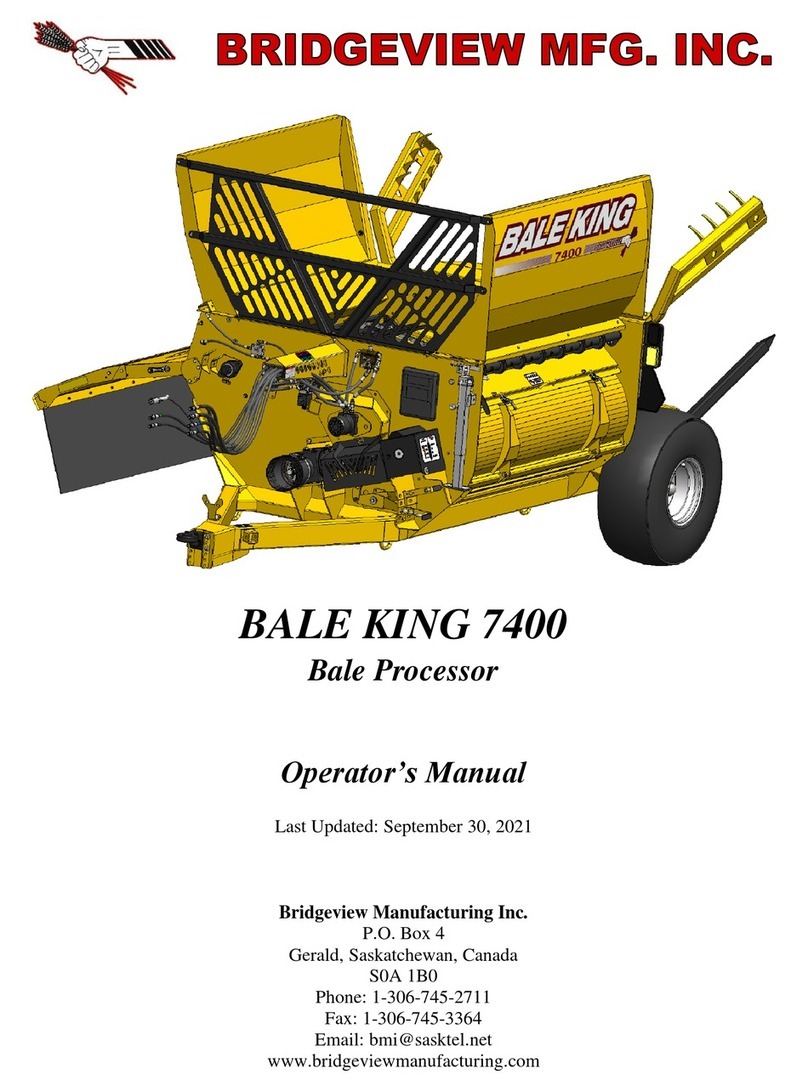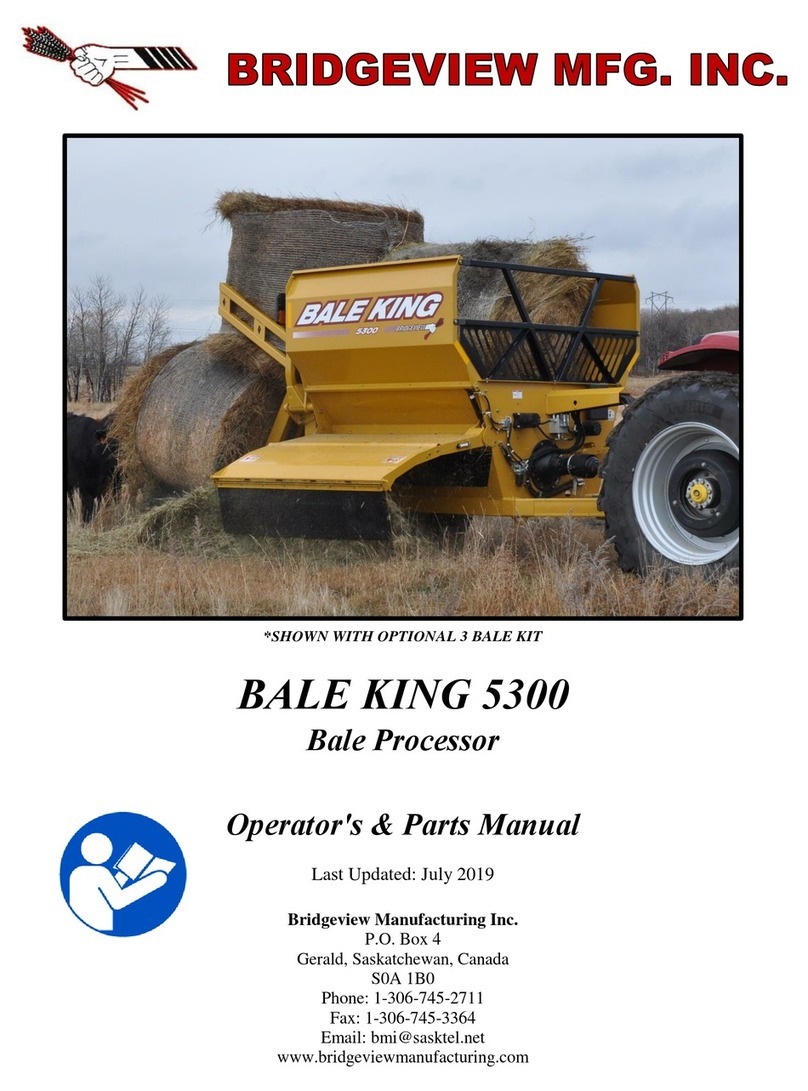TABLE OF CONTENTS
INTRODUCTION .............................................................................................................. 1
Safety Precautions........................................................................................................... 1
Safety Decals .................................................................................................................. 2
FEATURES & OPERATION............................................................................................. 5
Power Take-off ............................................................................................................... 5
Hydraulics....................................................................................................................... 9
Cylinder Maintenance................................................................................................... 10
Implement Tongue........................................................................................................ 10
Rear Fork Tines............................................................................................................. 11
Wing.............................................................................................................................. 11
Hoop Grate Adjustment................................................................................................ 12
Deflector ....................................................................................................................... 13
Agitators........................................................................................................................ 16
Loading Bales ............................................................................................................... 17
Optional Fine Chop Kit................................................................................................. 18
Lubrication and Maintenance ....................................................................................... 19
Tire Inflation and Rating............................................................................................... 21
Twine Removal............................................................................................................. 22
Rotor and Flail Replacement ........................................................................................ 23
Transportation............................................................................................................... 24
Features and Specifications........................................................................................... 26
Optional Fine Chop Kit (Installation)........................................................................... 28
PARTS MANUAL............................................................................................................ 29
Machine Overview........................................................................................................ 29
Jack & Hitch ................................................................................................................. 30
Wheels & Hub............................................................................................................... 31
Spindle .......................................................................................................................... 32
Rotor & Drive Components.......................................................................................... 33
Gearbox......................................................................................................................... 34
PTO Shaft...................................................................................................................... 36
Agitators........................................................................................................................ 37
Grates............................................................................................................................ 38
Upper Tub Components................................................................................................ 39
Slow Moving Vehicle Sign Kit..................................................................................... 41
Rear Forks..................................................................................................................... 42
Deflector & Hose Cover ............................................................................................... 43
Main Frame................................................................................................................... 45
Manual Holder.............................................................................................................. 46
PTO Holder................................................................................................................... 47
Twine Cutter ................................................................................................................. 48
Fine Chop Kit (Optional).............................................................................................. 49
Diverter Valve............................................................................................................... 50
Decals............................................................................................................................ 51
ELECTRICAL & HYDRAULIC SCHEMATICS........................................................... 52
NOTES.............................................................................................................................. 60
